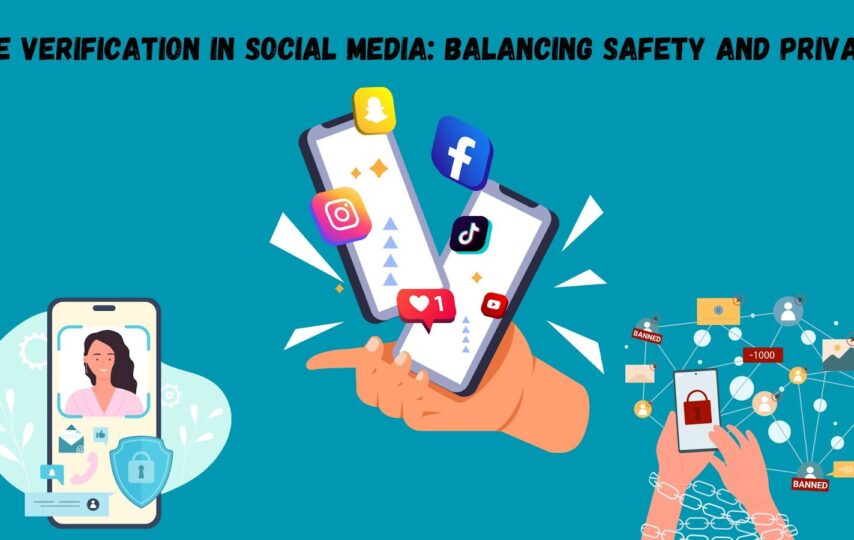Social media has become an important part of our daily lives and so the concerns about the safety of children and teenagers are at risk.
Minors these days are using social media apps like Instagram, Facebook, Twitter, and TikTok constantly, and implementing an effective age verification system has become essential.
Not just social media platforms but also websites offering adult services require strong age checks. Simultaneously, privacy remains a key consideration.
But privacy is also as important as online safety and age verification because it raises concerns among users due to the sites collecting their personal information and storing it.
So, various laws and regulations concerning age verification and online safety have been proposed and implemented.
Despite all these issues, it is the responsibility of the parents and organizations to take joint accountability in nurturing a secure digital environment for children. Companies are expected to evolve in the area of age verification as technology advances.
The Current State of Age Verification in Social Media
Social media usage has increased drastically among teenagers, with platforms like YouTube, Instagram, and TikTok emerging as Gen Z’s favorite apps. However, with this fast growth, social media companies are trying to implement identity validation solutions.
Only a few consumers trust social media firms to restrict underage access to mature content. Further, a third of teenagers admitted lying about their age to access platforms with age restrictions.
Currently, most social networks depend on self-declared information during sign-ups, with few checks to authenticate the provided details. Users simply need to enter their birth date, with no verification of the accuracy of this data. This reliance on the honor system enables minors to easily bypass age gates by entering a false date of birth.
Social media platforms need to move beyond the status quo of lax age verification enforcement. Implementing authentication is pivotal to restricting underage access and creating a safer environment.
Beyond Social Media: The Wider Web’s Lax Age Verification
Social media platforms are not the only digital spaces warranting stringent age verification. Websites that provide adult entertainment, online gambling, e-cigarettes, and alcohol, require users to be of legal age. However, current age verification processes on such online entities are also largely inadequate.
Organizations that verify users’ birth dates or simply ask users to check a box saying they are of legal age do not amount to robust authentication. More thorough cross-checks against government IDs are vital to reliably verify ages.
As the digital space amplifies in reach, the need for air-tight age verification across the web’s expanse, and not just on social media, grows increasingly important.
Privacy Concerns with Age Verification
At first glance, stringent age verification seems like an obvious solution to enhance safety for minors online. However, the intersection of safety and privacy on the internet can be delicate and complex.
The core challenge is that there is no direct way to authenticate ages online, akin to a bartender or cashier physically checking IDs. Instead, age verification happens through technological intermediaries, which opens doors to potential exploitation.
When users submit personal data including names, dates of birth, and IDs for verification, this information could be misused or sold by unscrupulous websites. Companies may use children’s data for targeted advertising or share the data with brokers.
Further, verifying minors poses additional privacy concerns. Children below 13 years rarely have government-issued identification, making it difficult to cross-verify their age. Collecting and storing data of minors also requires parental consent, adding another layer of checks.
Thus, organizations need to implement age verification in a privacy-centric manner. This means only requesting necessary personal details, securing user data, and being transparent on how the data will be utilized.
Legislative Efforts to Enhance Online Safety
Given the apprehensions regarding lax and invasive age verification, lawmakers are proposing legislation focused on online safety for minors. While most bills are still under deliberation, one pioneering law is already setting new precedents.
In September 2022, California passed the Age-Appropriate Design Code Act (CAADCA) – a landmark youth safety law. Under CADCA, online platforms must estimate the age of users and cater to the experience accordingly by default.
Companies need to apply data protections based on age groups, including obtaining parental consent for users under 16 years old. However, CAADCA does not explicitly mandate age verification. Rather, it requires platforms to deploy age-estimation tools and adjust experiences based on the estimated age.
On a federal level, bills like the proposed Kids Online Safety Act (KOSA) are gaining momentum. KOSA prohibits websites from collecting data on children under 16 without consent. It also enables parents to view, delete, and stop data collection.
Shared Responsibility: Organizations and Parents
To implement effective age verification, companies can improve age verification services. This uses a combination of biometric facial analysis, government database checks, and machine learning algorithms to authenticate ages without compromising user privacy. Such solutions enable platforms to balance safety and privacy concerns when verifying users.
Along with internal technology, partnering with reliable providers can further strengthen age verification initiatives through social platforms and websites. While laws and policies hold significance, age verification for online safety requires a collaborative effort between corporations and parents.
Technology firms, especially social platforms and websites attracting children need to be proactive in the authentication. Rather than viewing safety measures as hurdles to user growth, companies must prioritize children’s welfare over profits or scale.
However, parents also play a pivotal role in their children’s digital lives. Being aware of age verification measures on different platforms can help parents make informed choices. Further, using settings like content filters, screen time limits, and account privacy restrictions allows greater control over the child’s online experience. Communication is equally key – parents keeping channels open to discuss online risks and guiding children to use the internet safely and responsibly.
Through collaboration, tech providers and parents can nurture a safer internet for kids. Companies can deploy privacy-focused age verification technology, while parents can utilize safety tools and impart guidance.
The Road Ahead: A Vision for a Safer Internet
Creating a future internet that takes care of kids’ privacy and safety needs ongoing improvements in technology and rules. While laws tell tech companies to make things safe, these companies need to come up with private and safe ways to verify age.
Some of the good ideas like hidden age checks with coding, several checks without IDs, and age checks that parents approve can be initiated.
Some companies are already trying out these ideas. Meta, for example, used a smart age check on Instagram and Facebook Dating for teens. It worked well, stopping 96% of teens who tried to lie about their age. More companies can try these ideas too.
Governments care about keeping kids safe online. So, companies will probably work harder on age checks that respect privacy and safety. Parents will also watch closely what their kids do online.
By working on both technology and rules, we’re getting closer to an internet that’s safe and private for everyone. As technology, laws, and how people see things change, we’re moving towards an internet where safety and privacy can work together well.
Key Takeaways
Social media age verification is primarily concerned with implementing a robust process that covers the entire digital landscape. It should adopt a balanced tone, and highlight the concerns as well as the emerging solutions to the complex interplay between safety and privacy.
At the same time, the involvement of parents is immensely important for guiding their children through their digital journey and encouraging them to have open conversations about online safety. A safer and more responsible digital future can be achieved through these collaborative efforts between parents and organizations.








